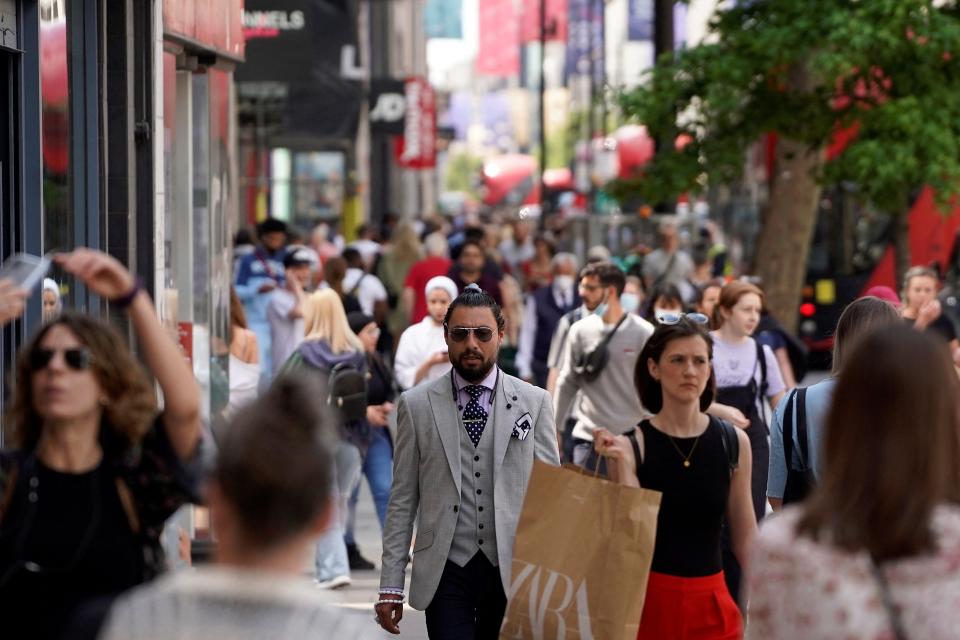Inflation: ‘Post-lockdown’ spree sends prices surging

Inflation has surged to its highest rate in almost two years fuelled by an “out of lockdown” spending spree by relieved consumers.
The headline measure of inflation — the Consumer Prices Index (CPI) — rose faster than expected from 1.5 per cent in April to 2.1 per cent in May as “non-essential” shops opened for the first time since January.
It was the first time that inflation has passed the Bank of England’s two per cent official target since July 2019, raising fears that the “emergency” levels of interest rates will soon have to be raised from the current 0.1 per cent.
The bounce in the CPI since it fell to a low of 0.3 per cent in November is the fastest since the recovery from the financial crisis more than a decade ago.
The Office for National Statistics (ONS) said the rise was driven by the rising cost of clothes, fuel and computer games.
The 17.9 per cent surge in the cost of filling the tank over the past year was the highest increase in fuel prices more than four years. ONS chief economist Grant Fitzner said: “This month’s rise was led by fuel prices, which fell this time last year but have jumped this year, thanks to rising crude prices. Clothing prices also added upward pressure as the amount of discounting fell in May.”
The “ominous” increase was seen in by some in the City as a red flag warning that the unleashing of pent up savings built up during the pandemic could send inflation spiralling to dangerous levels. However, other analysts said the spike was a “one off” triggered by the end of the winter restrictions that will soon subside.
Last week, the Bank of England’s chief economist, Andy Haldane, said a rise in inflation above the central bank’s target must be only temporary, and that long-term levels of high inflation need to be “avoided at all costs”.
Ian Stewart, chief economist at consultants Deloitte, said: “The big question is whether price rises drive wages higher, creating a wage-price spiral.
“That looks unlikely — but not wholly impossible.”
Read More
Inflation jumps putting new pressure on Bank of England to raise rates
Inflation soars past Bank of England target to 2.1% in May
Getting away with it: How Britain escapes the Covid economic crisis

 Yahoo Finance
Yahoo Finance 